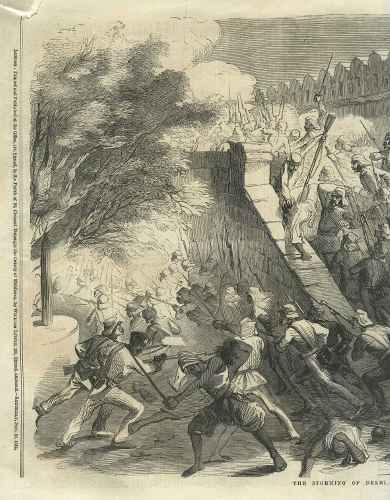
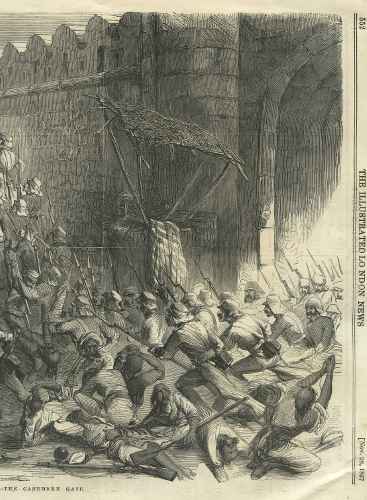
 |
 |
Source: ebay, Mar. 2007
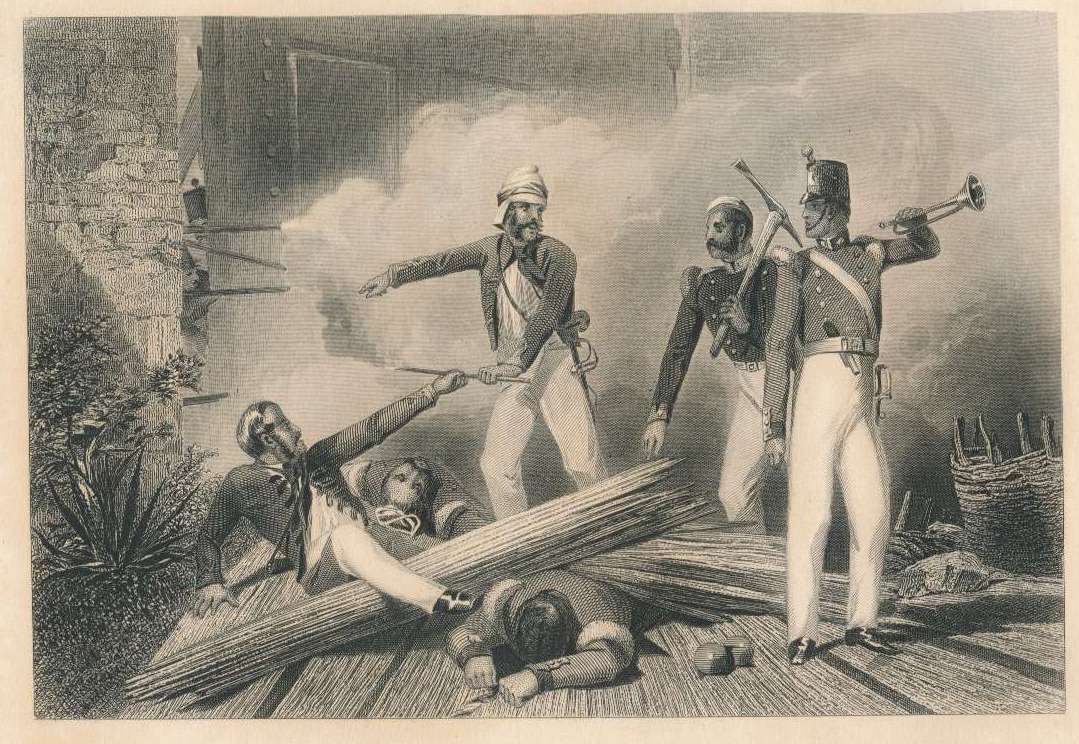
"Blowing up of the Cashmere Gate at Delhi, 14 Sept. 1857," a steel engraving by Darley and Ridgway
Source: ebay, Aug. 2005
From the original description:
Meanwhile, the third column effected an entrance by the Cashmere gate. At the head marched an explosion party, composed of Lieutenants Salkeld and Home Sergeants Smith and Carmichael, Corporal Burgess, and Bugler Hawthorne, with fourteen Native sappers and miners of the old Bengal army and ten Punjabis. Covered by the fire of the Rifles, the advanced party safely reached the outer barrier gate which they found open and unguarded. Home, Smith, Carmichael, Havildar Madhoo, and another Native sapper, passed over the partially destroyed drawbridge, and succeeded in placing powder-bags at the foot of the double gate. The enemy, on recovering their first astonishment at the audacity of the procedure, poured forth volley after volley through the open wicket. Carmichael was killed, and Madhoo wounded; but the powder was laid, and the four survivors sprang into the ditch while the firing party, under Lieutenant Salkeld, proceeded to perform its perilous duty Salkeld was mortally wounded while endeavoring to fire the charge, and fell handing the slow-match to Burgess, who succeeded in setting the train on fire, but was shot dead immediately afterwards. [The scene depicted on the engraving]. Havildar Tiluk Sing was wounded; and another Hindoo, whose name is given in the report as Ram Heth, was killed. Thus the most popular exploit of the day was performed by Europeans, Seiks, and Bengal sepoys, fighting, suffering, and dying side by side. Colonel Baird Smith names no less than six natives, as having shown the most determined bravery and coolness throughout the whole operations; and praises "the remarkable courage shown by the Native officers and men in assisting their wounded European comrades."

"The Capture of the Cashmere Gate, 14 Sept. 1857," a steel engraving, London Printing and Publishing Co., c.1858
Source: ebay, July 2005
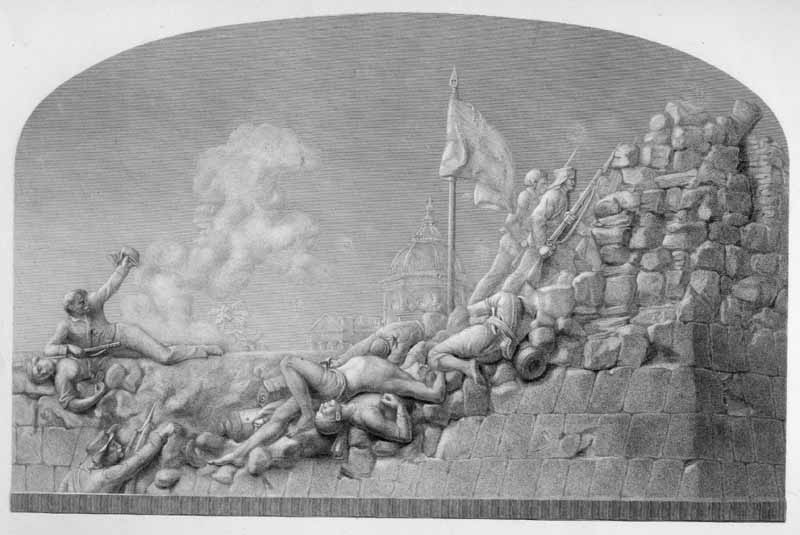
Nicholson died during the attack
Source: ebay, June 2001
"Engraving from London's 1865 Art Journal titled THE CASHMERE
BASTION,
DELHI, SEPT 14 1857. Engraved by E Roffe from the Bas-Relief by J
A
Foley."
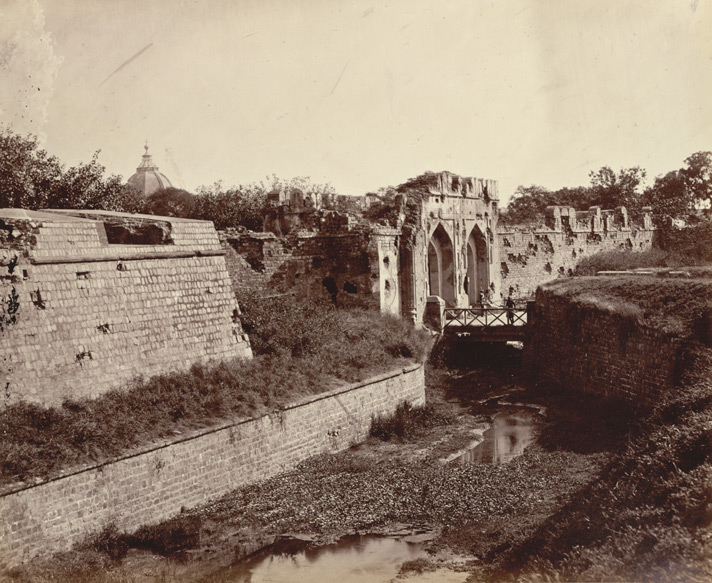
*The Cashmere Gate, Delhi; a photo by Eugene Clutterbuck Impey, 1860* (BL)
*"General Nicholson's grave, Delhi,"* a silver print, c.1900; *a statue of General Nicholson*; *another view of the statue*
Source: ebay, Nov. 2007

A tablet at the site names some of the attackers who died there
Source:
http://www.indian-cemeteries.org/ICImages/Delhi/KashmirGate/Img00031.jpg
(downloaded Nov. 2004)
== Indian Routes index == Indian Routes sitemap == Glossary == FWP's main page ==